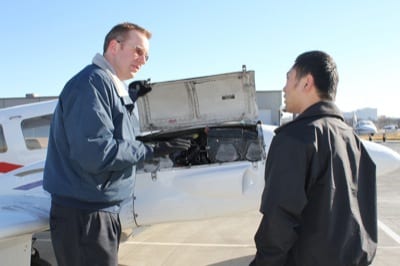DENTON, Texas — Keeping one of the nation’s largest flight schools up and running requires a steady focus on recruiting CFIs and students. At any given time, there are about 75 CFIs working with 230-250 students in the two training facilities owned by US Flight Academy, a branch of the US Aviation. Training operations are conducted at the home field in Denton, as well as at Grayson County Airport in Sherman, Texas.
The average tenure for a CFI at US Flight Academy varies according to the hiring activity in the airlines. “In most cases, a CFI will instruct for six to nine months before moving on to the airlines, cargo lines or to a job in corporate flying,” said David Adams, Director of Logistics and Assistant Chief Instructor at the Academy. “We’ve had a few who have been here for a couple years, because they like it and are in no rush to sign up with a regional airline.”

Over 90% of the students the CFIs work with are training for careers as professional pilots, primarily in the airlines, he noted.
Once the federal requirement for airline employment increases this summer to 1,500 hours, the tenure of CFIs at US Flight Academy will also change, he said. A CFI at US Flight Academy can log between 800 and 1,000 hours a year, so their stay at the academy will begin to average 18 months before they move on. Given the looming airline pilot shortage and the average pilot age, 51 years, there is little doubt that CFIs from US Flight Academy will have no problems getting employment once they hit the 1,500 hour mark, officials speculate.
Officials note that their trips to job fairs will continue. Adams is in constant communication with schools like Embry Riddle, Spartan, Southeast Oklahoma, Oklahoma State University and Utah Valley University for candidates. He also receives resumes from all over the United States. Once every three weeks he starts an indoctrination class for new CFIs, covering a 250-page training manual and a flight test.
“It’s a lot like the airlines in that everything a CFI does with one of our students is articulated in the manual,” said Adams. “Once they learn the discipline of training, they find it easy to adapt to airline procedures.”
For more information: USAviationAcademy.com
